- Home
- About Us
- Products
-
Heat-Pump Dehumidifier DeAir
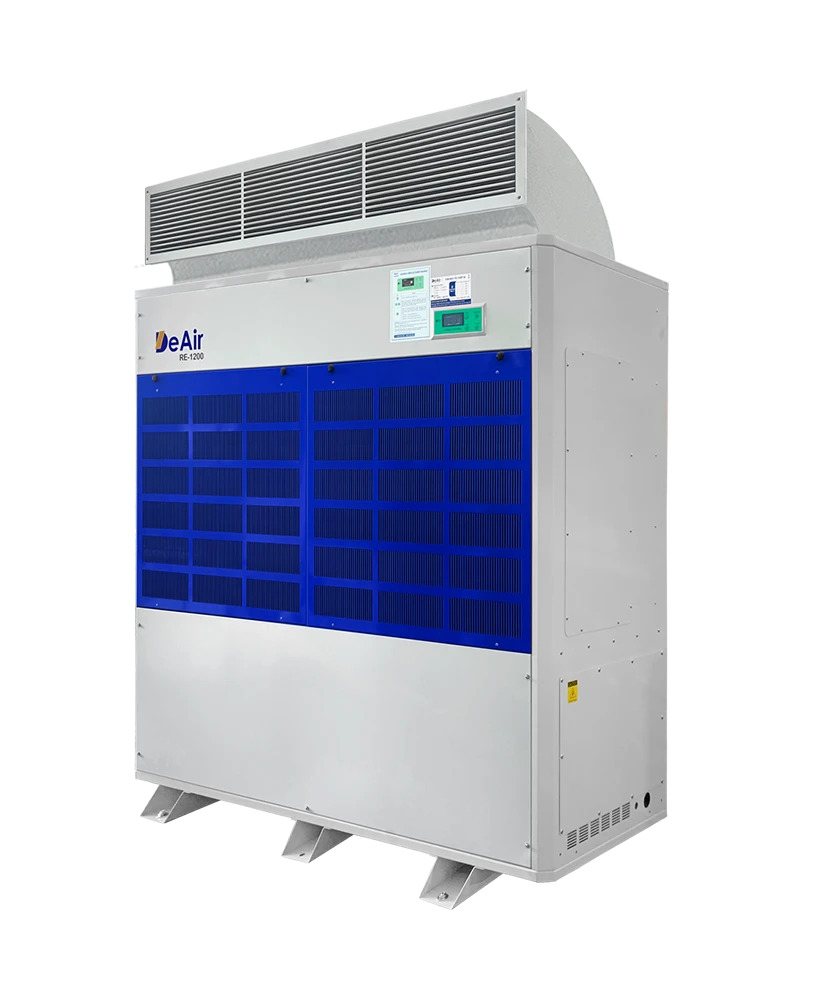 DeAir.RE
DeAir.RE -
Heat-Pump Dryer DeAir.RE-H
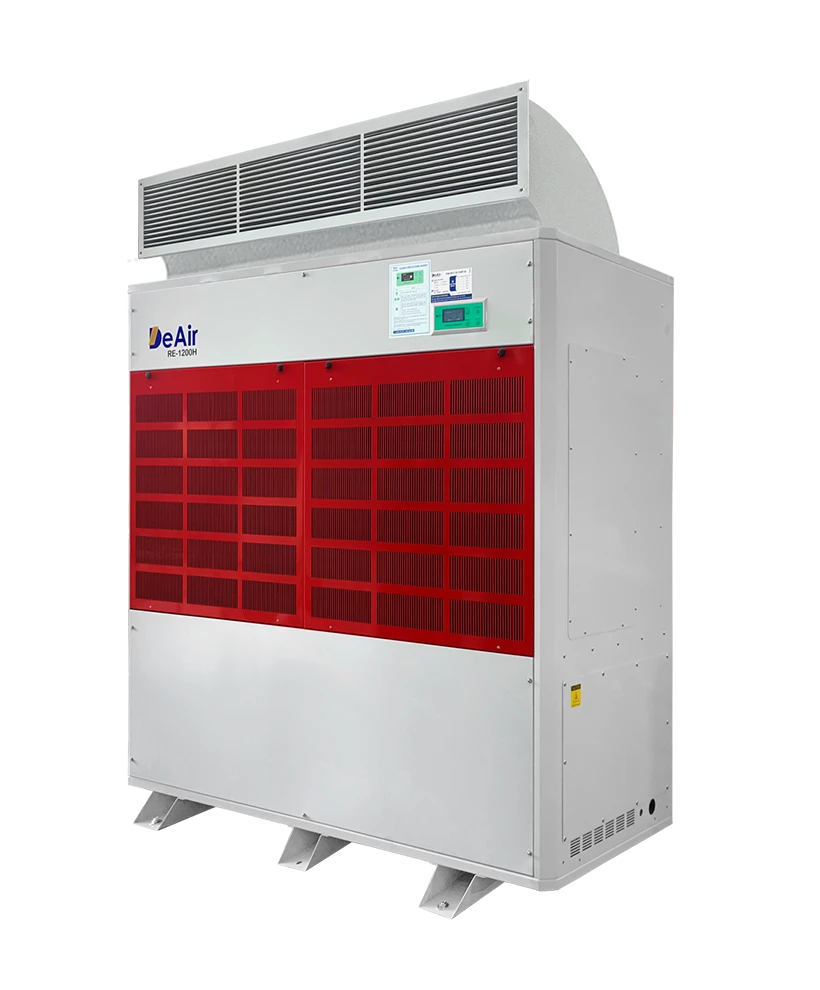 DeAir.RE-H
DeAir.RE-H -
Heat-Pump Stainless Steel Dehumidifier
 DeAir.RE-INOX
DeAir.RE-INOX -
Heat-Pump Isothermal Dehumidifier DeAir.CRE
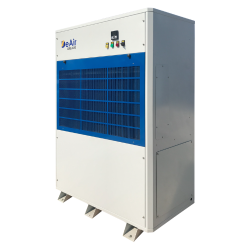 DeAir.CRE
DeAir.CRE -
Dezenno Dehumidifier
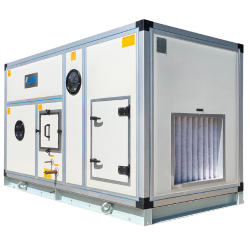 Dezenno
Dezenno -
Heat-Pump Ceiling Mounted Dehumidifier DeAir
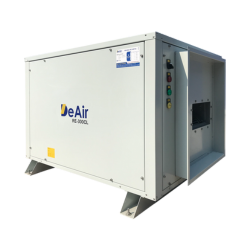 DeAir.RE-CL
DeAir.RE-CL -
Dehumidifier Olmas
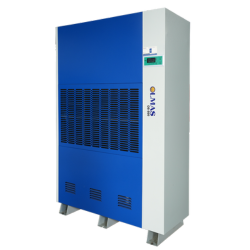 Olmas-OS
Olmas-OS -
Industrial Humidifier DeAir
 DeAir.HM
DeAir.HM -
Heat-Pump Dryer Daxwell
 Daxwell
Daxwell -
Electric Duct Heater DeAir
 DeAir.Heat
DeAir.Heat -
Air Handling Unit Dezenno.MAX
 AHU
AHU
-
- Services
- Projects
- Warranty – Maintenance
- News
- Contact
Dehumidifier Solution for Cold Storage of Agricultural Products
27/05/2025
Solutions Dehumidifier for Cold Storage for Agricultural Preservation: Which Option Suits Your Business?
In the agriculture and food supply chain, cold storage plays an extremely important role. This is where agricultural products such as vegetables, tubers, fruits, animal products, and many other items are preserved and stored to maintain quality and freshness. Cold storage not only helps ensure a stable food supply but also contributes to price control and food safety for consumers.
However, operating cold storage, especially in the hot and humid climate of Vietnam, poses a significant challenge: humidity control. High humidity in the low-temperature environment of cold storage can cause many serious problems. Industrial dehumidifiers have emerged as an essential solution to address this issue, ensuring effective preservation of goods.

Why is humidity control extremely important in cold storage for agricultural preservation?
Cold storage operates at very low temperatures, ranging from positive temperatures (chilled storage, around 0°C to 10°C) to deep negative temperatures (frozen storage, which can go down to -40°C or lower). In this environment, high humidity is the main cause of much damage and waste:
- Freezing, frosting on the cooling coil: Excess moisture in the air will condense and freeze on the surface of the cooling coil of the refrigeration system. This ice layer reduces heat exchange efficiency, increases the load on the main refrigeration system, and wastes energy.
- Freezing on the surface of products and packaging: Moisture can also freeze directly on agricultural products and packaging, causing product damage and making loading, unloading, and inspection difficult.
- Mold and bacteria growth: For chilled storage operating at positive temperatures, high humidity creates favorable conditions for mold and bacteria to grow. This seriously affects the quality of agricultural products, especially fresh food, and can pose a risk to health. Regular cleaning of cold storage or when odors and mold are detected is necessary to prevent the spread of bacteria.
- Corrosion of storage structure and equipment: High humidity accelerates the rusting and corrosion of metal parts of the storage structure and internal equipment.
- Reduced product quality and value: Preservation in an unsuitable humidity environment can lead to a decrease in nutritional value, changes in properties, and spoilage of agricultural products. Agricultural products preserved in cold storage with good quality will have a higher selling price.

Which industrial dehumidifier technology to choose for agricultural cold storage?
There are several popular industrial dehumidifier technologies, but not all are suitable for the low-temperature environment of cold storage.
- Industrial Condensing Dehumidifier (Refrigeration Dehumidification): Operates by cooling humid air below its dew point so that water vapor condenses into water. This technology is NOT SUITABLE for cold storage, especially frozen storage operating at negative temperatures or near 0°C. The reason is that at these low temperatures, water vapor will freeze on the cooling coil instead of condensing into liquid water. This ice layer clogs the coil, reduces efficiency, or stops operation. Condensing dehumidifiers are also less effective at low temperatures due to the lower absolute amount of water vapor and can release heat into the cold storage. Although some sources may mention the use of condensing technology for agricultural cold storage, more detailed technical analyses show that they can only operate effectively at relatively high positive temperatures (e.g., above 5-10°C) and still face significant technical barriers when temperatures drop lower.
- Heat Pump Dehumidifier: Combines the principle of condensation with a heat pump cycle to increase energy efficiency. However, in principle, this technology still relies on cooling for condensation, thus still facing the serious problem of cooling coil freezing at low temperatures as in cold storage (near 0°C or deep negative). DeAir's Heat Pump models typically have a recommended operating temperature range of 5-60°C, which is NOT suitable for cold storage environments operating below 5°C, especially frozen storage. They are more suitable for industrial spaces at room temperature or chilled storage with stable positive temperatures and do not require extremely low humidity.
- Industrial Rotor Dehumidifier (Desiccant Dehumidifier): Uses a rotor containing desiccant materials (such as Silica Gel or Zeolite) to directly absorb water vapor from the air. The absorption process is continuous without the need to cool to the dew point. This technology is VERY SUITABLE AND THE OPTIMAL CHOICE for cold storage, especially frozen storage and applications requiring extremely low humidity or at very low temperatures. The outstanding advantage is the ability to operate effectively even at very low temperatures without freezing. They can reduce humidity to very low levels (low absolute humidity), meeting the strict requirements of frozen storage or applications requiring humidity below 40% RH.
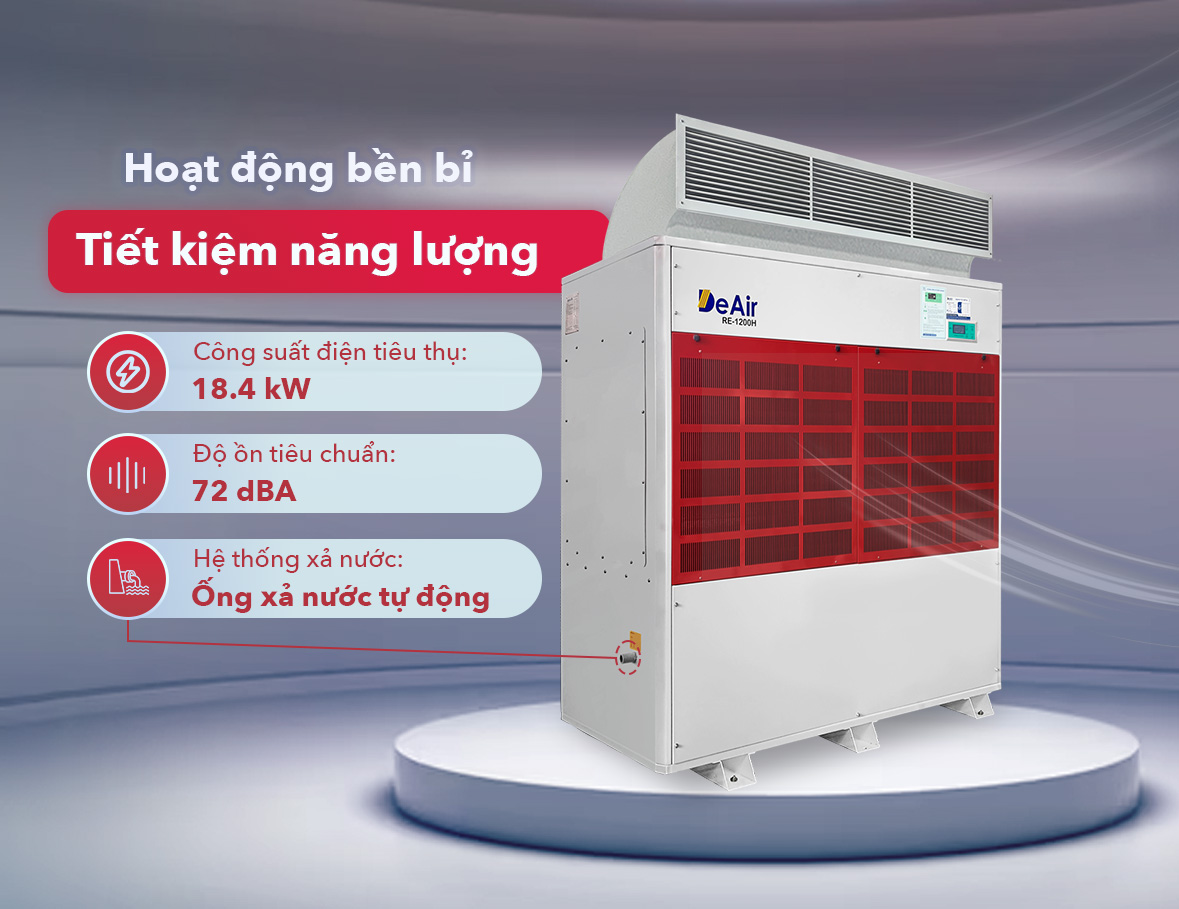
Dezenno Industrial Rotor Dehumidifier Solution from DeAir for Agricultural Cold Storage
DeAir is a reputable unit in Vietnam specializing in manufacturing and providing industrial humidity control solutions. With experience and understanding of humidity challenges in the industry, DeAir offers the Industrial Rotor Dehumidifier product line with Desiccant technology (Dezenno Series), which is the ideal and most suitable solution for agricultural cold storage, especially frozen storage and storages requiring very low and precise humidity maintenance.
Why choose DeAir's Dezenno Industrial Rotor Dehumidifier for agricultural cold storage?
-
Effective operation at low temperatures: Using advanced Desiccant technology, Dezenno machines operate effectively even at very low temperatures without cooling coil freezing, unaffected by negative temperatures.
- Precise and deep humidity control: Capable of precisely controlling both relative humidity and absolute humidity. Maintains extremely low dew points, preventing harmful condensation.
- Protecting the quality of agricultural products: Effective humidity control helps prevent mold, bacteria, and product spoilage. Extends shelf life, maintains the physical and chemical properties of agricultural products. Agricultural products maintain better quality, helping to increase profits.
- Reduces the load on the main refrigeration system: By removing moisture from the air before it enters the cooling coil, the industrial rotor dehumidifier helps reduce the operational load on the main refrigeration system, contributing to energy savings.
- High durability and stable operation: Dezenno Industrial Rotor Dehumidifiers are manufactured with high-quality materials and advanced technology, ensuring long service life and continuous, stable operation in the harsh environment of cold storage. DeAir is proud that our products are manufactured in Vietnam, ensuring high quality and reasonable costs.
- Professional service: DeAir provides 24/7 professional technical service, regular and comprehensive maintenance programs, helping to ensure optimal system operation and extend equipment life.
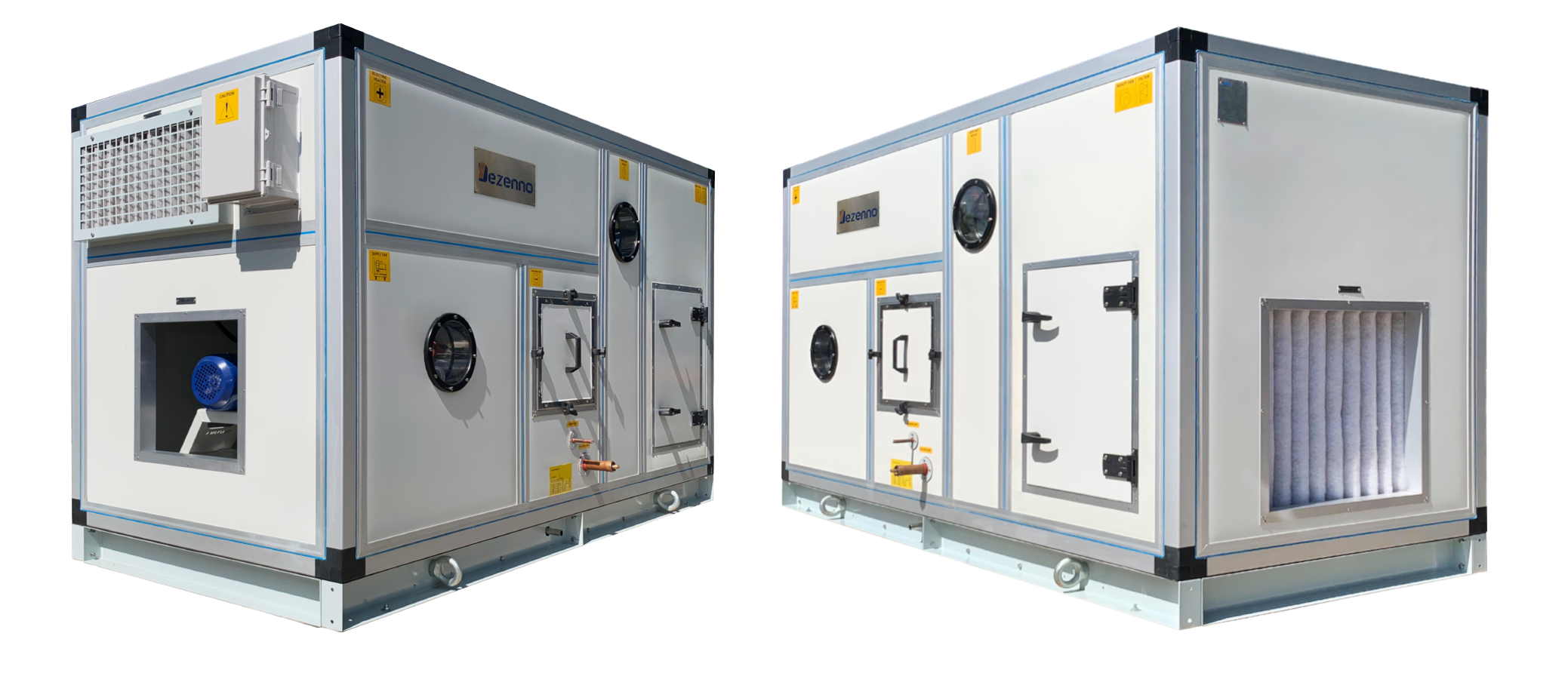
How to choose the right Dezenno Industrial Rotor Dehumidifier for agricultural cold storage
To choose the Dezenno model with the most suitable capacity for your agricultural cold storage, carefully consider the following factors:
- Volume of the cold storage space: It is necessary to determine the volume (m³) to estimate the amount of air to be treated.
- Operating temperature of the cold storage: Chilled or frozen storage will affect the absolute humidity requirements.
- Current humidity level and required post-treatment humidity: It is necessary to know the ambient humidity and the desired humidity for preserving specific agricultural products. Dried agricultural products usually require deeper dehumidification than fresh vegetables and fruits.
- Amount of goods entering and leaving the storage and the level of moisture leakage: The frequency of door opening and the tightness of the storage affect the amount of moisture entering from the outside.
- Available energy source for rotor regeneration: Industrial rotor dehumidifiers require heat to regenerate the desiccant material; this heat source can be electric heaters or waste heat from other sources.
- Installation space: Consider if the installation location of the machine is limited.
Advice from DeAir experts: DeAir's team of experts is ready to advise and design the optimal dehumidification system for your cold storage based on the above factors.
(For specific model recommendations and the most accurate quote, please provide detailed information about your cold storage. DeAir will analyze and propose a suitable solution.)
Supporting factors for agricultural cold storage
Besides the refrigeration system and dehumidifiers, several other factors also contribute to enhancing preservation efficiency:
- Circulation fans: Help distribute temperature and humidity evenly throughout the storage, avoiding uneven temperature conditions.
- PVC strip curtains: Important for maintaining stable temperatures, preventing cold air loss when moving goods, and limiting moisture accumulation at doors.
- Regular cleaning: Ensure compliance with food safety and hygiene standards, preventing bacteria and mold.
Conclusion
Humidity control in cold storage is crucial for protecting the quality of agricultural products, maintaining the efficiency of the refrigeration system, and minimizing operating costs. In Vietnam's climate conditions, industrial dehumidifiers with Desiccant Rotor technology (Dezenno) are the optimal choice for cold storage, especially frozen storage and storages requiring extremely low humidity, thanks to their ability to operate effectively at low temperatures without freezing.
DeAir is proud to be a manufacturer and supplier of specialized Dezenno industrial rotor dehumidifiers, a reliable solution for industrial cold storage applications in Vietnam. With quality products, suitable technology, and professional service, DeAir is committed to providing comprehensive solutions to help you preserve agricultural products effectively, enhance value, and build reputation in the market.
For detailed advice on the dehumidifier for cold storage for agricultural preservation solution that best suits your specific needs, please contact DeAir today.
Frequently Asked Questions about Cold Storage
What is cold storage and what is its main purpose?
Cold storage is a storage system designed to maintain low temperatures, usually from 0°C to 10°C for chilled storage and -12°C to -20°C (or even lower to -40°C) for frozen storage, to preserve temperature-sensitive food and goods. The main purpose is to extend the preservation time, maintain product quality, prevent the growth of microorganisms, and minimize losses. Cold storage plays an important role in the cold supply chain, especially for agricultural products, seafood, and processed foods.
What are the basic requirements for cold storage to ensure safety and effective preservation?
To ensure safety and effectiveness, cold storage needs to meet many technical and operational requirements. The most important is the ability to precisely control temperature and humidity suitable for each type of product. A good insulation system is necessary to maintain a stable temperature and prevent the influence of external environmental temperatures. Cold storage also needs an effective ventilation system, a design that limits direct light, a floor with a drainage system and raised to avoid direct contact with the ground. In addition, there needs to be a safety and security system to prevent unauthorized access and theft, along with regular monitoring and inspection of systems. Clear product classification and labeling also contribute to effective inventory management.
What are the basic components of a cold storage system?
A cold storage system includes many important components working together to maintain low temperatures. The main components include:
- Insulated enclosure: Made from insulation materials (such as 100mm thick Polyurethane) and covered with electrostatic powder-coated steel to ensure durability and aesthetics.
- Cold storage doors: Available in various types and sizes (hinged doors, sliding doors), usually made of rust-free 304 stainless steel with internal insulation. Rust-resistant hinges, latches, and door seals help prevent cold air loss. Sturdy door frames often have heating wires to keep them dry.
- Refrigeration system: Includes a compressor unit (compressing refrigerant), an evaporator (installed inside the storage, with fans and defrost heaters), and a condenser (exchanging heat with the outside environment). These devices are often imported from reputable brands.
- Control system: Uses digital technology to set and adjust temperature, as well as other functions such as defrosting.
- Shelves and flooring: Shelves are reasonably designed from 304 stainless steel to classify products, the floor is made of non-slip, heavy-duty ribbed stainless steel.
- Circulation fans: Help distribute temperature and humidity evenly inside the storage.
- PVC strip curtains: Installed at doors to prevent cold air loss, partition areas, and limit moisture accumulation.
Why is humidity control important in cold storage, and what are the main problems when humidity is too high?
Humidity control is extremely important in cold storage because the low-temperature environment easily leads to condensation. High humidity causes many serious problems:
- Freezing, frosting on the cooling coil: Moisture condenses and freezes on the cooling coil, reducing heat exchange efficiency, increasing load, and consuming more energy of the main refrigeration system.
- Freezing on the surface of products and packaging: Moisture freezes directly onto goods and packaging, causing product damage and difficulties in loading and unloading.
- Mold and bacteria growth: Especially in chilled storage at positive temperatures, high humidity creates conditions for mold and bacteria to grow, seriously affecting quality, especially food.
- Corrosion of structure and equipment: High humidity accelerates the rusting and corrosion of metal parts.
- Reduced product quality and value: Preservation in an unsuitable humidity environment degrades nutritional value, changes properties, and spoils goods.
Which dehumidifier technology is most suitable for cold storage and why?
In cold storage, especially frozen storage operating at deep negative temperatures, Rotor technology dehumidifiers (Desiccant Dehumidifier) are the optimal and most suitable choice.
- Operating principle: Uses a rotor containing desiccant materials (such as Silica Gel) to directly absorb water vapor from humid air. A stream of hot air is used to regenerate the desiccant material and expel the moisture.
- Outstanding advantages for cold storage: Operates effectively even at very low temperatures without freezing (due to the principle based on absorption, not condensation). Capable of reducing humidity to very low levels (low absolute humidity), meeting the strict requirements of frozen storage or sensitive products. Continuous operation is not interrupted by defrost cycles. Effectively reduces the load on the main refrigeration system.
- Not suitable: Condensing dehumidifiers (Refrigeration Dehumidification) are not suitable for cold storage at low temperatures because the cooling coil easily freezes, reducing efficiency or stopping operation.
What are the benefits of applying technology and automation in cold storage operations?
The application of technology and automation, especially IoT (Internet of Things), in cold storage operations brings many significant benefits. Densely arranged temperature and humidity sensor systems allow for real-time mapping of temperature and humidity within the storage. When deviations from set parameters are detected, the system issues warnings, allowing operators to promptly adjust temperature and airflow in specific areas, instead of adjusting the entire storage. This helps save significant energy and costs. Vibration sensors on equipment (such as compressors) help detect potential early failures, allowing for maintenance before major breakdowns occur, avoiding high repair costs and operational interruptions. Automated control systems (using PLC) enable stable operation, data logging, anomaly alerts, and remote control, reducing manpower and facilitating energy monitoring.
What role does cleaning and maintenance of cold storage play in ensuring food safety and operational efficiency?
Regular cleaning and maintenance play a crucial role in ensuring food safety and maintaining the operational efficiency of cold storage. Cleaning helps prevent the accumulation of dirt, mold, bacteria, and pests, which can contaminate and damage products. Compliance with general hygiene principles (GHP) outlined in HACCP CODEX 2020 is necessary, including facility hygiene (walls, floors, ceilings made of non-absorbent, easy-to-clean materials), personal hygiene of staff (hand washing, wearing protective clothing), waste management, and allergen control. Regular maintenance ensures that all parts of the cold storage system (compressor, evaporator, condenser, control system, doors, etc.) operate correctly. Timely inspection and repair of minor issues can prevent major problems, extend equipment life, maintain stable temperature and humidity, thereby ensuring the quality of preserved products and saving long-term repair costs.
Sign up for news from DeAir
Related news






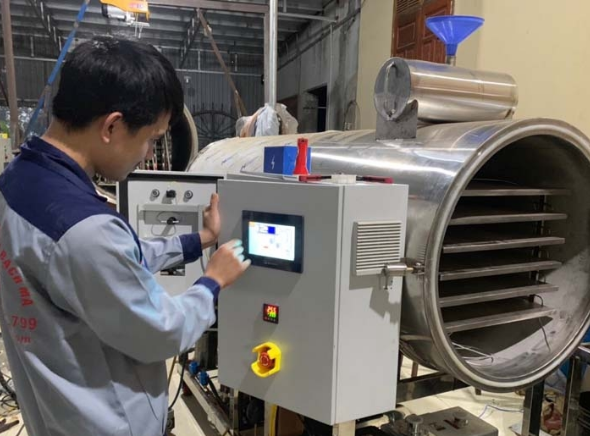



![[Case Study] DeAir Installs DeAir.De Rotor Humidity Control System for Pharmaceutical Plant in Binh Duong [Case Study] DeAir Installs DeAir.De Rotor Humidity Control System for Pharmaceutical Plant in Binh Duong](https://deair.com.vn/thumbs/news/2023_04/ban_giao_may_cho_duoc_bd/[270x153-cr]image1-1024x772.jpg__cv.webp)

![[Review & Guide] Olmas OS-300: The New Humidity Control "Warrior" for Medium to Large Warehouses [Review & Guide] Olmas OS-300: The New Humidity Control "Warrior" for Medium to Large Warehouses](https://deair.com.vn/thumbs/news/huong_dan_su_dung_may_olmas_21/[270x153-cr]vtm06440.png)